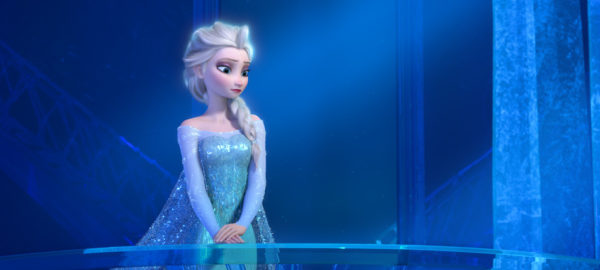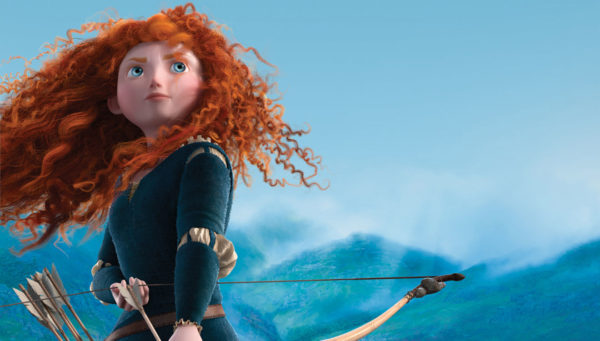In the trailer of the latest Cinderella film, that marks the acting debut of singer Camila Cabello, when Prince Charming tells Cinderella that he “picks” her to be his princess, Cinderella does not go swooning over the royal lad. Instead, this time, she asks, “But what about my work?”
The Amazon Original film, based on Charles Perrault’s fairy tale of the same name, is a modern take on the traditional story of the orphaned girl living with her evil stepmother – one that has been remade several times and has branched out into multiple versions. Directed by Kay Cannon, this modern musical version has already made history as the first Cinderella film to be directed by a woman.
It is set to release on Amazon Prime Video on Friday.
This film is the latest in a line of movies that have featured updated versions of the traditional princess stories.
Professor Sarah Coyne of Brigham Young University, whose research found that princess culture can have a positive impact on children, said, citing the new wave of Disney princesses such as Moana and Elsa, “Princess culture gives women key story lines where they’re the protagonist. They’re following their dreams, helping those around them, and becoming individuals who aren’t prescribed a role because of their gender.”
Silverscreen India brings you six instances where Hollywood films stepped away from the conventional princess stereotype and experimented with the concept of “happily ever after.”
An interesting point to note is that four of these six films are either directed or co-directed by women.
Cinderella (2021)

Directed by Kay Cannon, this modern musical version is the first Cinderella film to be directed by a woman. While Cannon does not tamper with the skeleton of the story, she has made several tweaks to the familiar story. The upcoming Cinderella is also path-breaking for having a gender-neutral fairy godmother, called Fab G. The character is played by actor Billy Porter, best known for starring in the television series Pose. From the trailer, Ella (played by Cabello), appears to be an aspiring businessperson, who dreams of opening her own apparel store called Dresses By Ella. She is taunted for her ambition – a townsperson says in the trailer, “Here’s a laugh, this girl fancies herself a businessman.” The film, also notable for featuring a non-white actor as Cinderella, will trace her journey to independence.
Raya and the Last Dragon (2021)

With Raya and the Last Dragon, Disney introduced its first-ever Southeast Asian princess. The film revolves around Raya, a warrior princess who belongs to the fantasy world of Kumandra. She sets out on a quest to find the last dragon, Sisudatsu, the only solution to re-uniting her home and the other lands. As the guardian of the dragon gem, she travels across desert and tropical lands on her steed Tuk Tuk, only to come face to face with Druun, the antagonist. The film focuses on faith and friendship and features no love interest. It “establishes an egalitarian behaviour in the men who play the supporting roles,” as per Coyne. In fact, armies of most clans are led by women, including Raya’s nemesis Namaari, the warrior princess of Fang.
Mulan (2020)

Based on the Chinese folklore Ballad of Hua Mulan, the live-action adaptation of the 1998 animation film of the same name, does not follow the concept of a conventional princess. Mulan hails from a family of modest background and aspires to become a warrior and serve the emperor, following the footsteps of her father. She disguises herself as a male warrior and gets conscripted into the emperor’s army. She goes on to become the best warrior among her fellows, all men, and joins the Imperial Army as an officer, becoming the first woman to do so.
Moana (2016)

Moana is the strong-willed daughter of the chief of a Polynesian village. She is chosen by the ocean to restore the Heart of Te Fiti and save her island from life-killing darkness. She is one of the few Disney princesses not to be based on a pre-existing Disney character, as per a fan page. Interestingly, she is also the second Disney princess who does not have a love-interest.
Moana is also notable from breaking away from the conventional body type of Disney princesses. Speaking to Time, Coyne said, “Moana is the one princess I can think of that is at least average size. She is very muscular.” However, Coyne also noted that we still have not seen any princesses with a large body type.
Frozen (2013)

With Frozen, co-director and writer Jennifer Lee became the first female director to have a film gross over one billion dollars worldwide, and the first female director from Walt Disney Animation Studios to win an Oscar. The musical-film revolves around two sisters, Anna and Elsa, who are princesses of Arendelle. Elsa, who has magical powers that can create ice and snow, runs away on her coronation day because of an accident, which inadvertently traps the kingdom in an eternal winter. Anna sets out on a journey to find her estranged sister and free the kingdom from the curse.
While Frozen might initially come off as a conventional prince and princess tale with the introduction of two potential romantic interests for Anna, they are essentially relegated to supporting roles. The “act of true love” is not a kiss from either of the men but Elsa’s realisation that love is the key to controlling magic. Frozen also features contrasting male characters. While Han, the royal, is shown as a gentleman on his best behaviour, Kristoff comes as a rather rustic guy owing to his modest background. It is only with time that their intentions are revealed. Speaking about positive portrayals of masculinity, Coyne noted, “One of my favorite characters is Kristoff in Frozen. He’s not like your muscular, ideal manly man. He’s a little softer, and he sings about his emotions. He works together with Anna. He asks for consent when he kisses her for the first time. It’s this beautiful egalitarian relationship.”
Brave (2012)

Brave introduced Merida, the first Disney princess ever who looks nothing like a princess. She detests being bound by norms as much as she hates wearing corsets, and is an aspiring archer. Her dishevelled hair signifies her spirit. The film follows Merida, who breaks a custom and brings a curse upon her family. She has to rely on her bravery and archery skills to undo it. Merida’s skills are portrayed and, to an extent, glorified in the film. She outsmarts all of her potential suitors at an archery competition. Men are portrayed as less competent in the film.
However, the film, which won an Oscar for Best Animated Feature, does uphold the typical body-type of Disney princesses. While the men are mostly large, women have a slender build.
As Professor Coyne noted, while there is a drive towards greater racial and ethnic representation, further progress can be made by introducing “princesses of all shapes and sizes, with all colours as well.”



